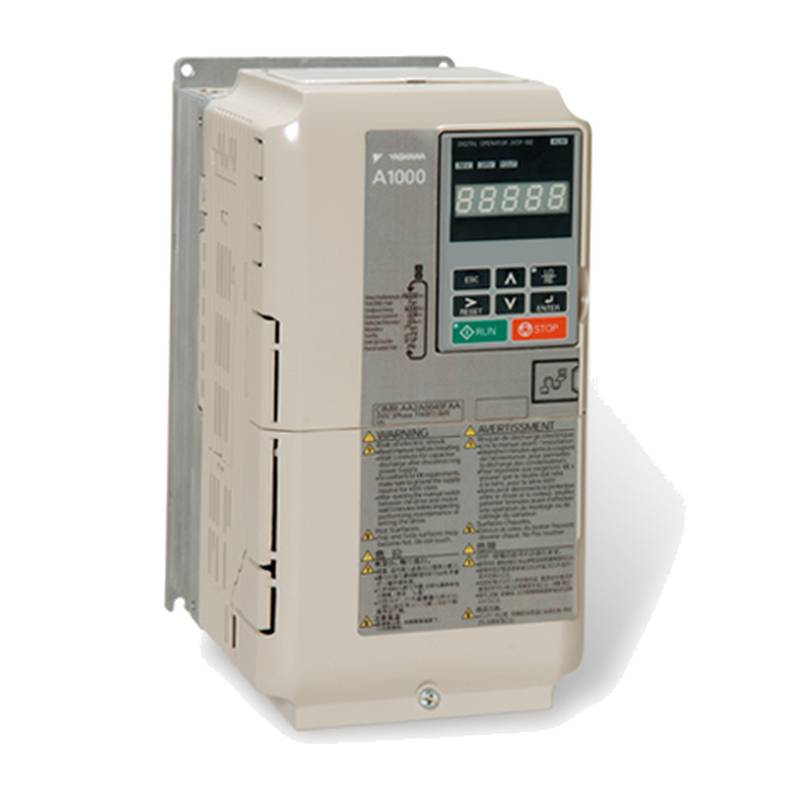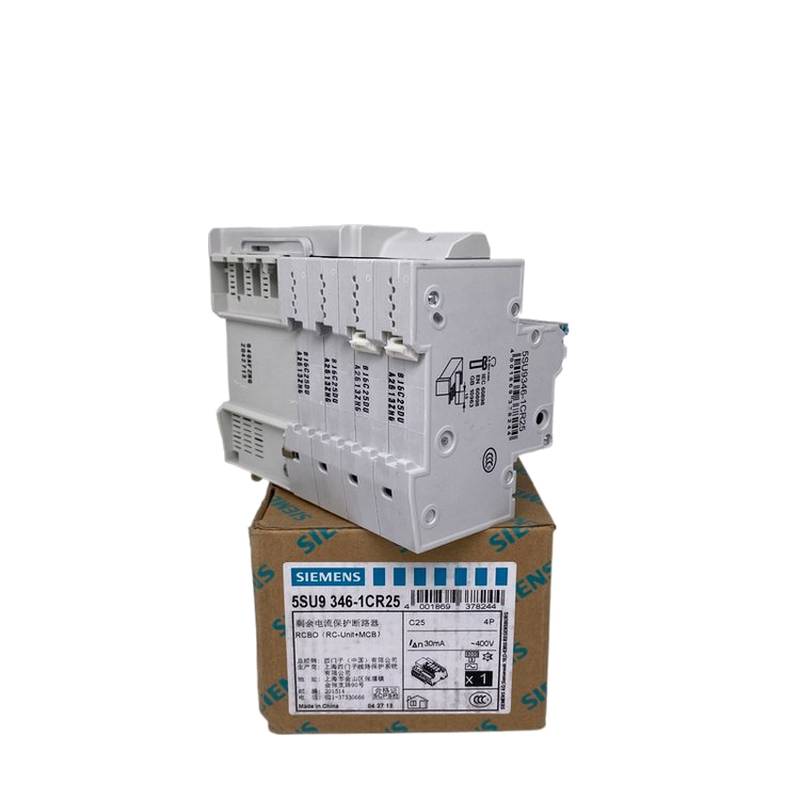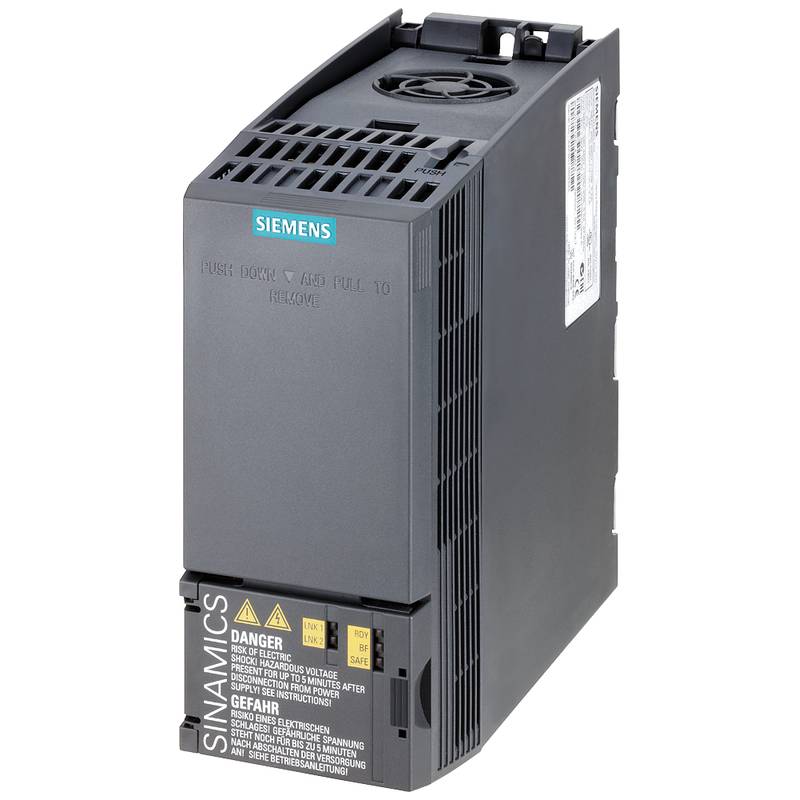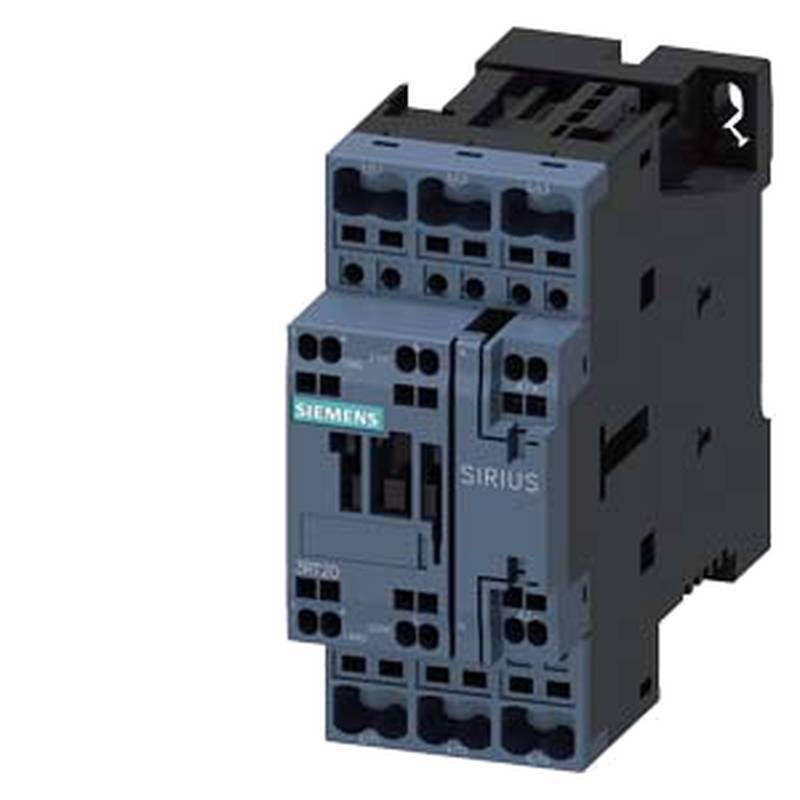
The YASKAWA A1000 series variable frequency drive (VFD), specifically the AB4A0004FBA model, is engineered for superior energy savings in fan and pump applications. This 0.75kW, 2.1A unit delivers precise motor control, enhanced efficiency, and robust performance, making it an ideal solution for HVAC systems, water management, and other variable torque loads. Its advanced control algorithms and user-friendly interface streamline operation and integration, positioning it as a leading choice for industrial energy optimization.
Product Specifications
| Feature | Specification |
| :------------------ | :------------------------------------------------ |
| Model | YASKAWA AB4A0004FBA A1000 |
| Type | Fan & Pump Energy Saving VFD |
| Rated Output Power | 0.75 kW (1 HP) |
| Rated Output Current| 2.1 A |
| Input Voltage | 3-Phase 200-240V AC (typically) |
| Output Voltage | 3-Phase 200-240V AC (typically) |
| Frequency Range | 0.01 Hz to 400 Hz |
| Control Method | V/f Control, Advanced V/f Control, Vector Control |
| Ambient Temperature | -10°C to +50°C (derating may apply) |
| Enclosure | IP20 (standard) |
Core Features & Market Positioning
The YASKAWA A1000 AB4A0004FBA stands out in the industrial VFD market due to its specialized design for fan and pump applications, offering significant energy savings. Its advanced control capabilities, including sophisticated V/f control and optional vector control, enable precise speed regulation and torque management, which are critical for optimizing fluid dynamics and reducing power consumption. This VFD is positioned as a high-performance, reliable solution for industries prioritizing operational efficiency and reduced environmental impact, differentiating itself from general-purpose VFDs through its tailored energy-saving algorithms.
Key Application Scenarios
This YASKAWA A1000 VFD is exceptionally well-suited for a broad range of variable torque applications. Its primary use cases include centrifugal fans in HVAC systems, where it modulates airflow to maintain desired temperatures efficiently, and pumps in water supply and wastewater treatment plants, where it adjusts flow rates based on demand, thereby minimizing energy waste. It is also ideal for building automation, irrigation systems, and industrial ventilation, anywhere precise control over fluid or air movement directly translates to energy cost reductions and operational stability.
Practical System Integration Guidance
Integrating the YASKAWA A1000 AB4A0004FBA into existing systems is straightforward due to its flexible configuration options and clear terminal layout. Proper wiring involves connecting the incoming power supply to the designated input terminals and the motor to the output terminals, ensuring correct phase rotation. For optimal performance, parameter programming is essential; key settings include motor nameplate data, desired acceleration/deceleration times, and energy-saving parameters like the built-in "Energy Saving" function or "DC Injection Braking" for specific operational needs. Safety protocols during installation, such as ensuring the drive is de-energized before making connections, must be strictly followed.
Operation and Risk Mitigation
Operating the YASKAWA A1000 AB4A0004FBA involves setting operational parameters via its intuitive keypad or through communication networks. Risk mitigation is enhanced by understanding common fault codes, such as "Overcurrent" (often indicating a rapid acceleration demand or motor fault) or "Earth Fault" (suggesting insulation issues). Regular maintenance, including checking for dust accumulation and ensuring adequate ventilation around the drive, prevents overheating and premature failure. Adhering to the specified ambient temperature and humidity limits is crucial for maintaining drive longevity and operational safety.
Scalability & Long-Term Value
The A1000 series offers excellent scalability, allowing for seamless integration into larger automation systems. Its communication options, including optional network cards for Modbus, Profibus, or DeviceNet, facilitate connectivity with PLCs and SCADA systems, enabling centralized monitoring and control. This enhances its value within an Industrial Internet of Things (IIoT) framework, allowing for data collection on energy usage and performance metrics, thereby supporting predictive maintenance strategies and continuous process improvement. Compatibility with Yaskawa's broader product ecosystem ensures a cohesive and expandable automation solution.
Frequently Asked Questions
What are the primary benefits of using the YASKAWA A1000 AB4A0004FBA for fan applications?
This VFD precisely controls motor speed, matching output to system demand. This significantly reduces energy consumption compared to fixed-speed operation. It also extends equipment life by minimizing mechanical stress during startup and operation.
The YASKAWA A1000 offers advanced algorithms for optimizing fan performance. It can maintain consistent airflow or pressure with minimal energy input. This leads to substantial operational cost savings in HVAC systems.
Furthermore, the drive's soft-start feature prevents sudden electrical surges and mechanical shocks. This enhances system reliability and reduces maintenance requirements.
How does the A1000 AB4A0004FBA contribute to energy savings in pump systems?
It allows for precise flow rate control by adjusting pump speed. This eliminates wasted energy from throttling or bypass methods. The drive's inherent efficiency also minimizes conversion losses.
The A1000 features dedicated energy-saving modes tailored for variable torque loads. These modes dynamically optimize motor performance. This ensures maximum efficiency across a wide operating range.
By reducing motor speed when full output isn't needed, the VFD significantly lowers power draw. This results in substantial reductions in electricity bills over the system's lifetime.
What are the key technical specifications of the YASKAWA AB4A0004FBA A1000 VFD?
This unit is rated for 0.75 kW (1 HP) and a maximum output current of 2.1A. It operates on a 3-phase 200-240V AC input power supply. The frequency range is extensive, from 0.01 Hz up to 400 Hz.
It utilizes advanced V/f control and offers optional vector control for enhanced performance. The drive is designed for ambient temperatures from -10°C to +50°C, with potential derating. Its standard enclosure is IP20.
The AB4A0004FBA supports various control methods for flexibility. These include advanced V/f, basic V/f, and torque/speed control modes.
Can the YASKAWA A1000 AB4A0004FBA be integrated into existing industrial control systems?
Yes, the YASKAWA A1000 series supports multiple communication protocols. Optional network cards allow integration with PLCs via Modbus, Profibus, and DeviceNet. This enables seamless data exchange and remote control.
The drive features robust I/O capabilities for direct integration with sensors and actuators. Its programmable inputs and outputs allow customization to fit specific system logic. This simplifies wiring and setup.
Integration into IIoT platforms is also possible. This facilitates data logging for performance analysis and predictive maintenance strategies.
What are typical troubleshooting steps for common faults on the A1000 AB4A0004FBA?
For overcurrent faults, verify motor load and acceleration settings. Ensure the motor is not stalled or short-circuited. Check if the drive's rated current exceeds the motor's rated current.
Earth fault alarms typically indicate insulation breakdown in the motor or cabling. Disconnect power and test insulation resistance. Inspect wiring for damage or improper grounding.
Overvoltage or undervoltage faults suggest issues with the input power supply. Check voltage stability and ensure it is within the drive's operating range. Verify power factor correction if applicable.
What is the recommended installation environment for the YASKAWA A1000 AB4A0004FBA?
Install the VFD in a clean, dry environment free from excessive dust or corrosive fumes. Ensure adequate ventilation to dissipate heat generated during operation. Avoid direct sunlight exposure.
Maintain ambient temperatures within the specified range of -10°C to +50°C. If operating near the upper limit, consider derating the drive or ensuring enhanced cooling. Follow mounting clearances to allow for proper airflow.
Protect the drive from moisture and condensation. Avoid installation in areas prone to vibration or mechanical shock. Proper installation is key to reliable long-term operation.
How do I program basic parameters on the YASKAWA AB4A0004FBA for a new installation?
Begin by entering the motor's nameplate data, including its rated power, voltage, current, and frequency. Correctly inputting these values is crucial for accurate motor control. Set basic acceleration and deceleration times suitable for the application.
Next, configure the desired operating mode, such as V/f control for fan/pump applications. Set the frequency reference source, typically either the keypad or an external analog input. Ensure the start/stop command source is correctly assigned.
Finally, enable the energy-saving functions if applicable and desired. Review all programmed parameters before enabling the drive to avoid potential issues. Consult the manual for specific parameter groups.
What are the safety precautions to take when working with the YASKAWA A1000 VFD?
Always disconnect and lock out the main power supply before performing any wiring or maintenance. Verify that the drive's DC bus capacitors have fully discharged, typically indicated by an indicator light. Use appropriate personal protective equipment (PPE).
Never attempt to open the drive's power terminals while it is energized. Ensure all grounding connections are secure to prevent electrical hazards. Follow local electrical codes and regulations during installation.
Be aware of high voltages present within the drive. Do not operate the drive without proper covers installed. If unsure about any procedure, consult the Yaskawa technical documentation or a qualified electrician.
How does the A1000 series handle motor overload protection?
The YASKAWA A1000 AB4A0004FBA incorporates sophisticated electronic overload protection features. It continuously monitors motor current and compares it against configured trip limits. This prevents motor damage from excessive current draws.
The drive allows for adjustable overload trip levels and time delays. This customization is essential for matching the protection characteristics to specific motor types and application demands. It provides flexibility beyond basic thermal overload relays.
In the event of an overload condition, the drive will safely decelerate the motor and trigger a fault code. This immediate response protects both the motor and the driven equipment from potential harm.
Is the YASKAWA A1000 AB4A0004FBA compatible with older Yaskawa drive models?
While the A1000 series represents advanced technology, Yaskawa often designs for backward compatibility in programming concepts. However, direct drop-in replacement for older models may require parameter adjustments or minor wiring modifications. Consult Yaskawa's migration guides for specific cross-references.
The core principles of VFD operation and energy saving are consistent across many Yaskawa generations. Understanding the specific features of the A1000, such as its advanced control algorithms, will highlight its advancements over older, simpler VFDs. It generally offers superior performance and efficiency.
For seamless integration into existing Yaskawa control architectures, consider the communication options. The A1000's advanced networking capabilities can often bridge communication gaps with older systems, providing a more integrated solution.

























